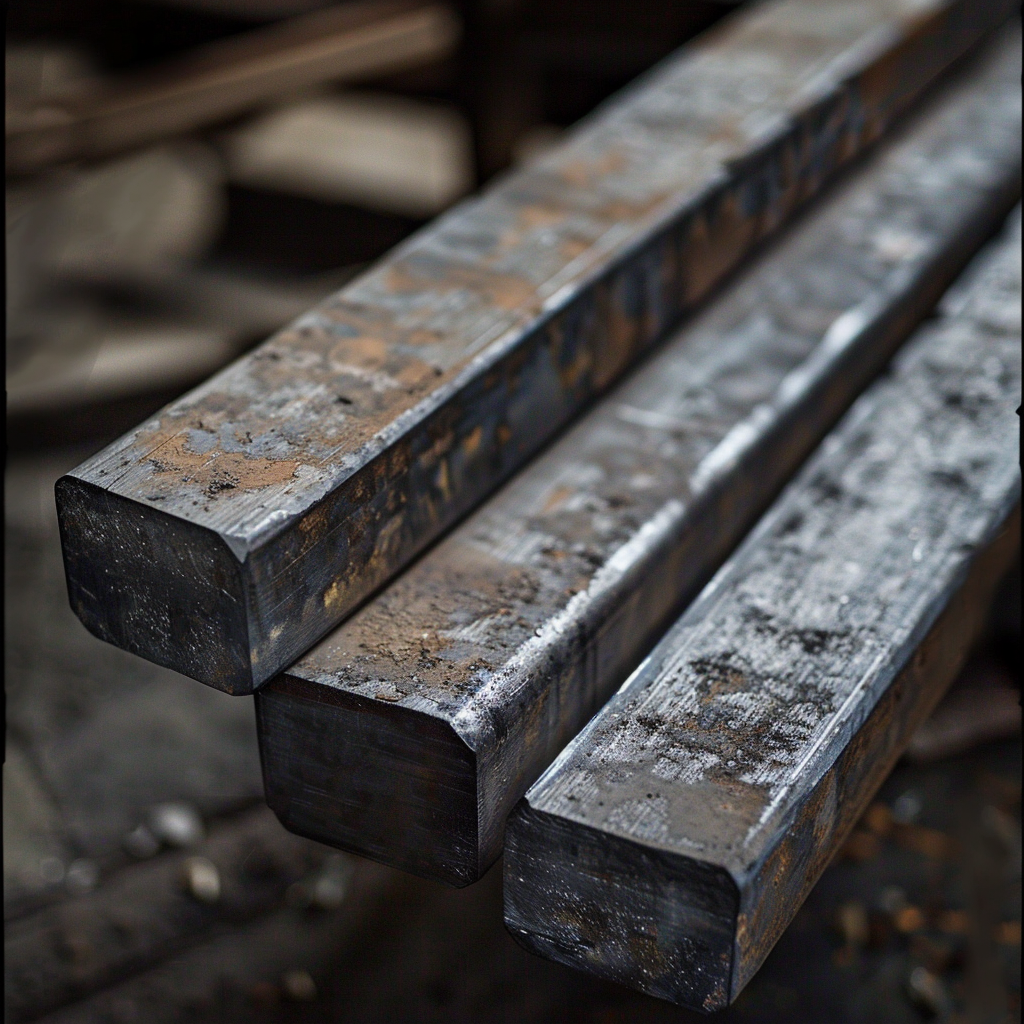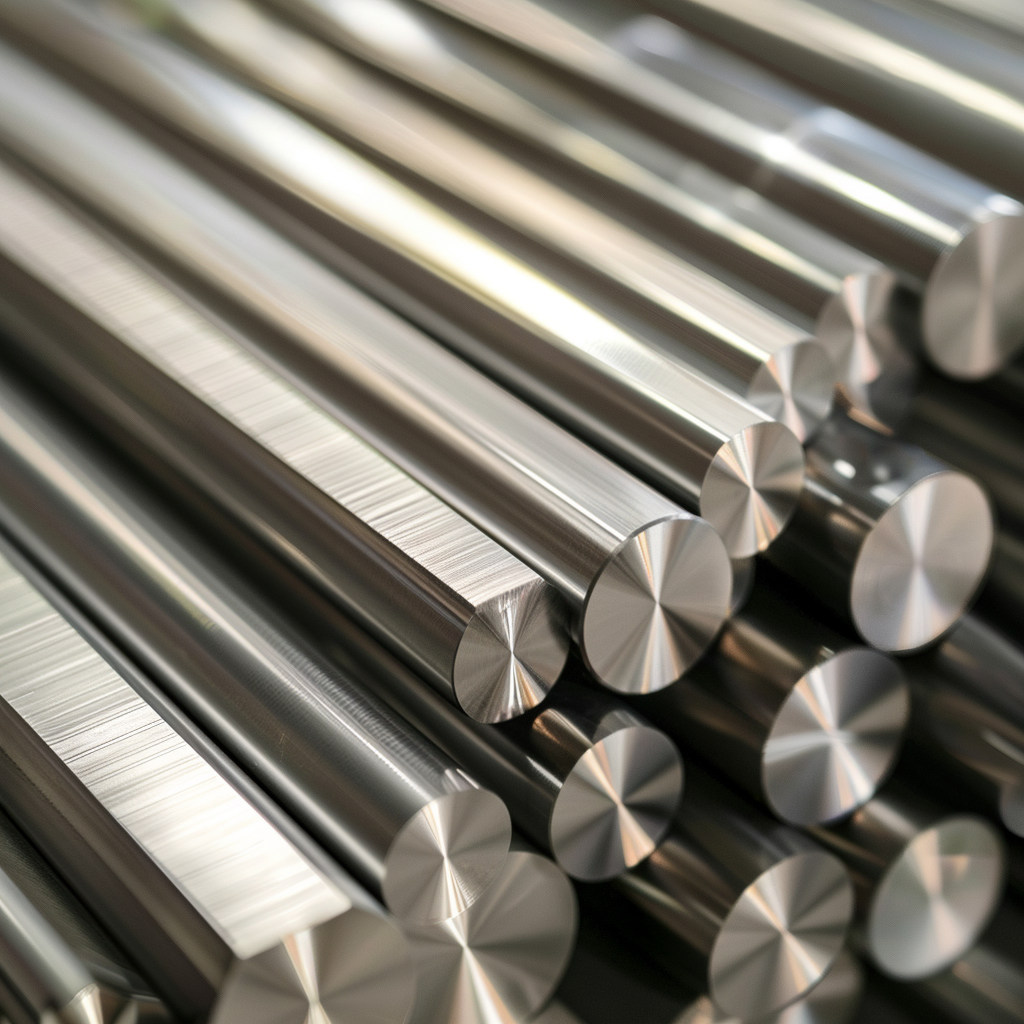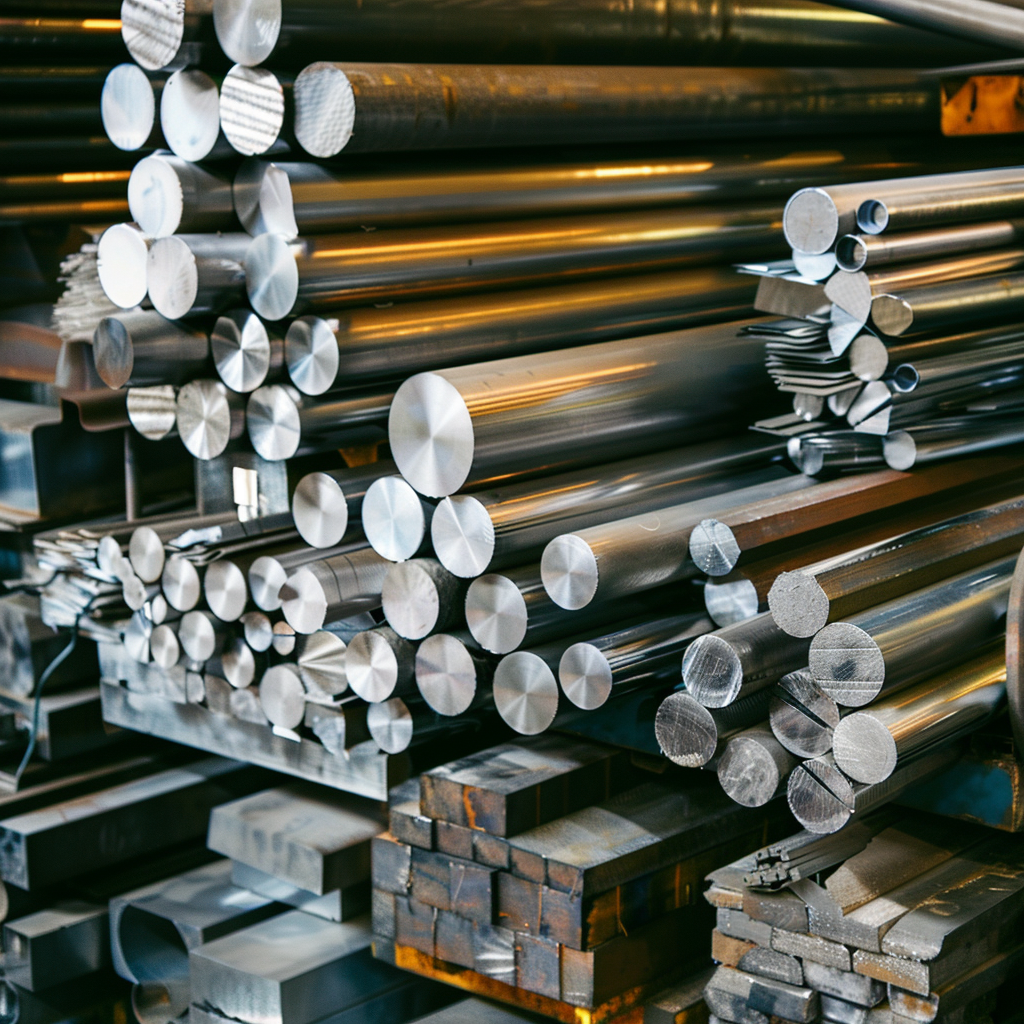Western kitchen knives play an important role in the kitchen and their performance depends largely on the materials used. Different materials have different properties, advantages and disadvantages that affect the cutting performance, المتانه, maintenance requirements and cost of the knives. This article will discuss in detail the advantages and disadvantages of several materials commonly used in Western kitchen knife making, including high carbon steel, ستانلس ستيل, alloy steel, ceramics and composites, to help understand how these materials perform in practical applications and the basis for selection.
1. High Carbon Steel (HCS)
Material Overview
High Carbon Steel is a steel with a high carbon content, usually between 0.6% و 1.0% carbon. It is favoured by chefs for its excellent cutting properties and relatively low cost. High carbon steel knives have been used extensively throughout history and still play an important role in modern kitchen knife making.
Advantages
Excellent Sharpness: High carbon steel is hard and can be sharpened to a very high degree. This material has excellent cutting properties and can easily cut through a variety of ingredients, including hard ingredients such as bones and nuts.
Good sharpening properties: High carbon steel is easy to sharpen and the angle and sharpness of the blade can be adjusted as needed. This allows chefs to customise their knives to suit their individual needs.
Wear Resistance: High carbon steel has good wear resistance under normal use conditions and does not wear out easily. The blade stays sharp for a longer period of time, which helps to improve cutting efficiency.
Relatively low price: Compared to some high-performance materials, such as diamond or high-grade alloy steel, high carbon steel costs less, making high carbon steel kitchen knives competitively priced.
Traditional Craftsmanship Feel: High-carbon steel knives have a long tradition, and many chefs enjoy their classic feel and sense of history.
Disadvantages
Susceptibility to Rust: The main drawback of high carbon steel is its susceptibility to rust. Since it does not have good corrosion resistance, it tends to oxidise when it comes into contact with moisture or acidic ingredients, causing rust spots to appear on the surface of the knife.
High Maintenance Requirements: High carbon steel knives require frequent maintenance and care. They need to be thoroughly dried after use and regularly coated with anti-rust oil to prevent rust and corrosion.
Relatively brittle: Despite its high hardness, high carbon steel is prone to chipping or cracking under extreme conditions such as dropping or contact with hard objects.
Variation in hardness: The hardness of high carbon steels may be affected by heat treatment and conditions of use, which may result in an unstable hardness of the cutting edge, thus affecting cutting performance.
2. Stainless Steel
Material Overview
Stainless steel is an alloy of steel to which at least 10.5% chromium has been added for excellent corrosion resistance. It is widely used in the making of western kitchen knives and is favoured by many home and professional chefs for its good durability and ease of maintenance.
Advantages
Excellent Corrosion Resistance: The chromium content of stainless steel gives it excellent corrosion resistance, which makes it resistant to moisture and acidic ingredients and less prone to rusting. This reduces the maintenance of knives.
Ease of Maintenance: Stainless steel knives are relatively easy to clean and maintain, and do not require the frequent application of rust inhibiting oils like high carbon steel knives, making them suitable for everyday use and cleaning.
Good resistance to deformation: Stainless steel has good resistance to deformation and is not prone to edge chipping or deformation due to improper use.
Good hardness and sharpness: High-quality stainless steel knives perform well in terms of hardness and sharpness and can meet the needs of most cutting tasks.
High durability: Stainless steel knives have a long service life and are able to maintain good performance over a long period of time.
Disadvantages
Difficult to Sharpen: Stainless steel is more difficult to sharpen than high carbon steels and requires specialised sharpening tools and techniques to maintain the sharpness of the blade.
Limited hardness: Although stainless steel has good hardness, its hardness and cutting performance may be slightly less than that of high carbon steels and some alloy steels.
Higher Cost: The high quality of stainless steel materials and machining techniques make stainless steel knives relatively expensive and may not be suitable for users on a budget.
Poor toughness: Some types of stainless steel have poor toughness and are prone to chipping or fracture when subjected to strong impacts.
3. Alloy Steel
Material Overview
Alloy steels are steels whose properties are improved by the addition of different alloying elements (e.g., tungsten, molybdenum, chromium, nickel, etc.) to the steel. The composition of alloy steels can be adjusted as needed to obtain specific properties.
Advantages
High hardness and wear resistance: By adding alloying elements, alloy steels are able to achieve high hardness and wear resistance. They are suitable for making high-performance kitchen knives for a wide range of cutting needs.
Improved corrosion resistance: Certain alloy steels have good corrosion resistance and are more resistant to moisture and corrosion than ordinary carbon steels.
Excellent cutting properties: Alloy steels can be optimised in terms of hardness and cutting properties for different applications, enabling the production of knives with excellent cutting results.
Improved toughness: The alloying elements in alloy steels improve the toughness of the steel, reducing the risk of brittle cracks and increasing tool durability.
Customisability: As the composition of alloy steels can be adjusted as required, it is possible to create tools that are suited to different uses and meet the specific needs of the user.
Disadvantages
Higher price: Alloy steels are more expensive to produce and process, making them relatively expensive to cut.
Complex Maintenance Requirements: Some alloy steels can be demanding in terms of care and maintenance, requiring regular servicing to ensure optimum performance of the tool.
Possible Corrosion Problems: Although alloy steels are more resistant to corrosion than high carbon steels, corrosion can still occur over long periods of time, especially in environments with high salt exposure.
Balance of hardness and toughness: Increasing the hardness of alloy steels may affect their toughness and vice versa, so there is a trade-off between hardness and toughness in practical applications.
4. Ceramic Materials
Material Overview
Ceramic tools are made of ceramic materials such as alumina and silicon nitride and have extremely high hardness and cutting properties. Ceramic knives have a place in the kitchen knife market due to their unique properties.
Advantages
Extremely high hardness: Ceramic knives are very hard and can maintain very sharp cutting edges, making them suitable for use in cutting a wide range of ingredients, including tough ones.
Excellent Wear Resistance: Ceramic materials have excellent wear resistance, which allows the blade to stay sharp for a long time and reduces the frequency of sharpening.
GOOD CORROSION RESISTANCE: Ceramic material is not prone to chemical reactions when in contact with acidic or alkaline ingredients, showing excellent corrosion resistance.
Lightweight and Easy to Handle: Ceramic knives are relatively lightweight and flexible, making them suitable for long periods of use without causing fatigue.
Taste and odourless: Ceramic knives do not react chemically with ingredients and therefore do not alter the taste and odour of the ingredients.
Disadvantages
Extremely brittle: Ceramic knives are extremely brittle and are prone to breakage on impact or dropping. This makes ceramic knives require extra care in everyday use.
Difficulty in machining: Ceramic materials are extremely difficult to machine and require specialised equipment and techniques to make knives.
Non-repairable tool wear: Ceramic tools are difficult to repair once worn or damaged. Ceramic tools cannot be routinely sharpened for maintenance compared to traditional tools.
Higher Costs: High-performance ceramic tools are more expensive to produce, making them relatively expensive in the market.
Restrictions on specific uses: Ceramic knives are not suitable for cutting hard objects (e.g. bone) or withstanding strong impacts, which limits their use in certain kitchen tasks.
5. Composite Materials
Overview of materials
Composite materials are usually made from a combination of two or more materials to take advantage of each material’s strengths. Common composite materials include polymer-based composites and metal-based composites. They are used in the manufacture of kitchen knives to improve their performance and durability.
Advantages
Superior all-round performance: Composites are able to combine the benefits of different materials, such as hardness, wear resistance, corrosion resistance and toughness, to provide a superior all-round performance.
Improved durability: By optimising material combinations, composites can increase the durability and damage resistance of knives for a wide range of kitchen tasks.
Lightweight: The low density of many composite materials allows for the creation of lightweight knives that are more comfortable and flexible to use.
High corrosion resistance: polymers or special coatings in composites can increase the corrosion resistance of knives and reduce maintenance.
Design Flexibility: Composites are flexible in their manufacturing process, allowing complex tool designs and shapes to be realised to meet specific usage requirements.
Disadvantages
Complex production processes: Composites are complex to manufacture and require highly skilled equipment and processes, increasing production costs.
Higher cost: High performance composite tools are often more expensive and may be beyond the budget of some consumers.
Stability of material properties: The performance of composites can be affected by different combinations of materials, ensuring stability and co-ordination between the constituent materials.
Difficult to repair: Once a composite tool has been damaged, it can be difficult to repair and the entire tool may need to be replaced.
Summary
In Western kitchen knife making, the choice of material has a significant impact on the performance, durability and cost of the knife. High carbon steel is widely used for its excellent sharpness and relatively low cost, but its susceptibility to rust and high maintenance requirements require attention. Stainless steels are favoured for their excellent corrosion resistance and low maintenance requirements, but their grinding difficulty and limited hardness may affect cutting performance. Alloy steels improve tool hardness and wear resistance by adding alloying elements, but their high cost and complex maintenance requirements need to be weighed. Ceramic materials offer extreme hardness and wear resistance, but their brittleness and machining difficulty limit their application. Composites improve tool performance by combining the advantages of different materials, but their complex production process and high cost may affect their market acceptance.
 يانغجيانغ أنتوني السكاكين المحدودة
يانغجيانغ أنتوني السكاكين المحدودة